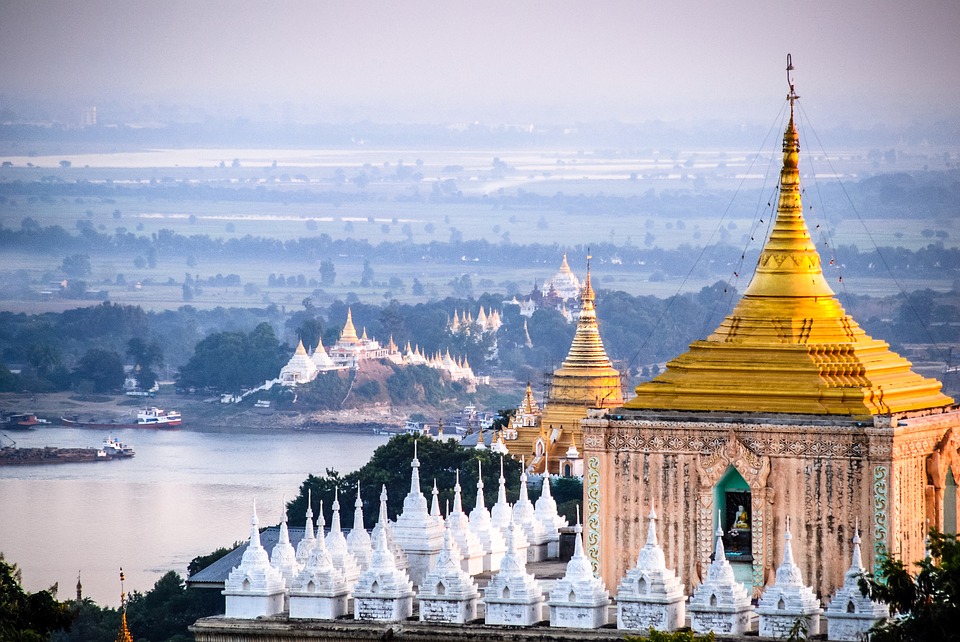My Travel Experience in Myanmar
Into the Heat
Myanmar in May is extremely hot, with temperatures frequently surpassing 100 degrees Fahrenheit. During my trip in 2010, the country was experiencing rolling blackouts as electricity was being diverted to construct a new capital city. Outside of Yangon, there was little reliable access to running water or power except for brief periods each day when generators kicked in. As a 21-year old student traveling solo, adapting to the stifling heat without air conditioning or fans presented quite a challenge. However, the locals seemed well-accustomed to the seasonal conditions and went about their daily lives. Many retreated indoors to escape the sun’s scorching rays, enjoying chilled drinks and cold desserts.

Navigating the Tourist Circuit
Government regulations tightly control tourist travel within Myanmar, effectively funneling visitors along a prescribed path from Yangon to Bagan, Mandalay, Inle Lake, and back to Yangon. Independent travel “off the beaten track” proves quite difficult. Upon arriving in each new destination, one’s passport details are recorded at travel checkpoints. Hotels and hostels must also submit reports on guest arrivals and departures. Despite these constraints, following the circuit allows tourists to experience some of the country’s most impressive attractions like the ancient Bagan temples and landscapes dotted with traditional floating gardens.
A Glimpse into Local Life and Hospitality
What always stood out during my trip was the warmth and friendliness of the Burmese people. Locals exhibited great curiosity about foreign visitors and welcomed opportunities to practice their English. Over shared bets of betel nut, an iconic Southeast Asian snack, I gained insights into everyday Burmese culture and values of respect, compassion, and community. At tea shops and roadside stalls, locals often insisted on treating tourists to refreshments and small gifts. Despite restrictions, a few kind families secretly hosted foreigners in their homes against regulations. Such genuine interactions helped provide a more meaningful glimpse beyond superficial touristic experiences.
Challenges with Money Exchanges
Procuring and exchanging money presented certain difficulties. Foreign currency, especially US dollars, needed to be crisp new banknotes in good condition for the best exchange rates. Banks closely inspected notes for even minor markings or creases before accepting them. Larger denominations like $50 and $100 bills gave better value than $5 or $10 notes. For those short on large bills, guesthouses offered exchange but at slightly lower rates than banks. Exchanging with strangers on the street promising high returns carried risks of scams. The safest option ended up being person-to-person swaps with departing travelers in exchange for local Myanmar kyat.
A Destination Worth Experiencing
Despite the heat, rules and troubles, Myanmar offers a one-of-a-kind cultural immersion that continues to captivate visitors. The country’s natural beauty, architecture and peoples’ warmth create a special appeal. Looking past its imperfections, one gains a richer understanding of history and society not found in guidebooks. My journey opened my eyes and heart to this Southeast Asian nation’s fragrances, flavors and hospitality. Though access remains limited, with patience and openness any traveler can uncover Myanmar’s captivating essence well worth braving entry challenges. After over a decade, memories of its highlights still linger vividly in my mind.
Beyond the Headlines
Heavy scrutiny from foreign media tends to portray an incomplete picture of complex realities on the ground. When crises like the Rohingya conflict dominate headlines, it’s easy to form biased views without considering all perspectives. During my stay, a local friend cautioned against solely trusting one-sided Western reports without verifying facts myself. While undeniably serious issues exist, demonizing an entire population overlooks everyday people’s kindness I witnessed firsthand. Positive change happens through open dialogue, not aggression or assumptions. Perhaps future visitors can seek balanced views from all sides to advance meaningful understanding between cultures.
Parting Thoughts
My travels in Myanmar instilled lasting lessons about navigating life’s unpredictabilities with adaptability, openness and gratitude. Even with difficulties, focusing on humanity’s shared goodness helps foster connection. Nearly a decade later, memories of locals’ warmth still bring a smile. While imperfect, this Southeast Asian country remains a place like no other, deserving more of compassion than condemnation. I hope one day reforms continue unlocking its beauty for many more travelers to experience Myanmar’s magic for themselves. 